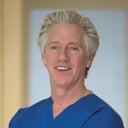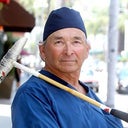One of the most common complications associated with lower blepharoplasty is the aggressive removal of fat and skin. This can result in a hollow appearance which immediately makes a person look older, and also often shouts "I've had plastic surgery" To avoid this look, be sure to view many, many before and after images from any plastic surgeon you are considering. Cosmetic lower eyelid surgery has undergone a paradigm shift over the twenty years since I began my plastic surgery training, as has facial rejuvenation surgery as a whole. The trend has been to move away from highly invasive procedures that focus on skin and fat excision and pulling skin structures as tight as possible (which tends to make a patient look less youthful and more like a stereotypical ‘plastic surgery patient’), and towards procedures that accomplish not only soft tissue preservation but also soft tissue enhancement – in the form of structural fat grafting. A typical 1970-1980’s era lower blepharoplasty usually consisted of the surgical removal of large volumes of lower lid fat, pulling the lower lid skin very tight and anchoring the lid laterally in a manner that often distorts the natural anatomy of the lateral canthus (lateral corner of the eye). I suppose you could say that this matches a windswept, pulled tight facelift - but it is not in any way truly rejuvenating. Current, state-of-the-art lower blepharoplasty focuses on soft tissue preservation, including some or most of what appears to be ‘herniated fat’. A number of techniques have been described that restore ‘herniated lower lid fat’ to a more ideal anatomic position, although ideally such a procedure leaves the orbital septum intact as shortening of the septum by suture tightening or cauterization carries with it some risk of lower lid retraction. The trend has been towards limiting fat reduction to primarily older patients with very prominent lower fat pads. In many cases, the appearance of lower lid fat pad fullness can be effectively corrected by a combination of structural fat grafting of adjacent hollow areas like the tear troughs and tightening the orbicularis oculi muscles to the lateral orbital rim – which effectively restrains the fat pads and improves lower lid contour. Lateral orbicularis oculi muscle suspension is a very powerful means for reversing lower lid aging changes, and for doing so in a manner that does not distort natural lower lid external appearance. Preserving lower lid fat as much as possible, and restoring fullness in adjacent hollow areas by means of fat grafting, is a truly rejuvenating approach to lower lid surgery. Preserving and adding fat serves to enhance the soft tissue support of the lower lid and helps to maintain an ideal and youthful lower lid position over time. The more support you provide for the lower lid, the less you have to rely on internal support measures such as canthopexy and canthoplasty, which are useful for very lax and for overly long lower lids, but which also may distort the natural anatomy of the lower lid and upper lid.




